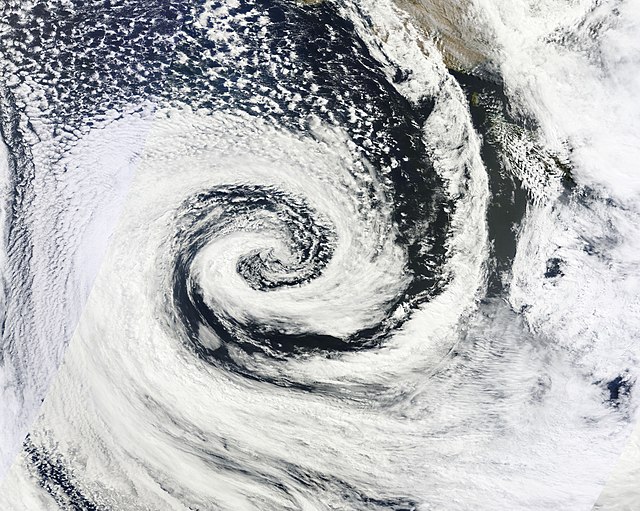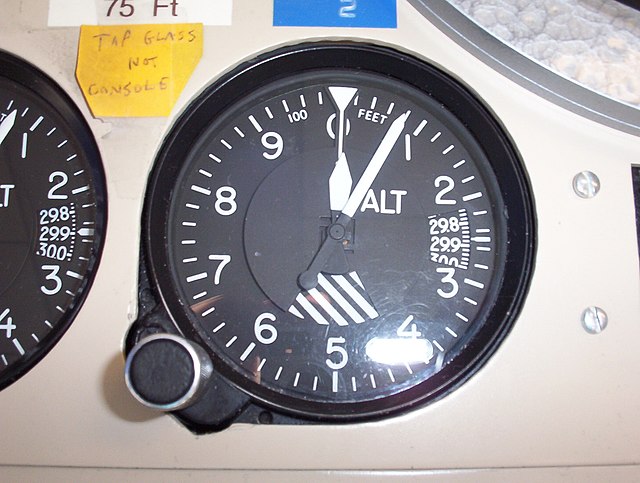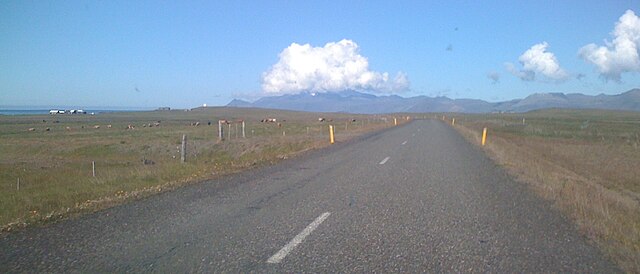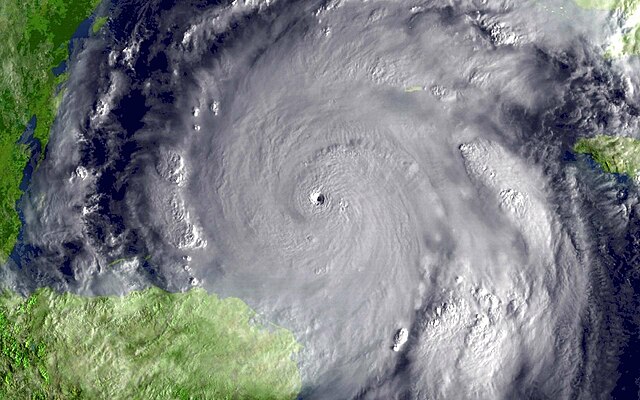In meteorology, a low-pressure area, low area or low is a region where the atmospheric pressure is lower than that of surrounding locations. Low-pressure areas are commonly associated with inclement weather, while high-pressure areas are associated with lighter winds and clear skies. Winds circle anti-clockwise around lows in the northern hemisphere, and clockwise in the southern hemisphere, due to opposing Coriolis forces. Low-pressure systems form under areas of wind divergence that occur in the upper levels of the atmosphere (aloft). The formation process of a low-pressure area is known as cyclogenesis. In meteorology, atmospheric divergence aloft occurs in two kinds of places:The first is in the area on the east side of upper troughs, which form half of a Rossby wave within the Westerlies.
A second is an area where wind divergence aloft occurs ahead of embedded shortwave troughs, which are of smaller wavelength.

A clockwise spinning low-pressure area or cyclone of southern Australia. The center of the spiral-shaped cloud system is also center of the low.
A low-pressure system over Iceland.
This depiction of the Hadley cell shows the process which sustains low-pressure areas. Diverging winds aloft allow for lower pressure and convergence at the Earth's surface, which leads to upward motion.
QuikSCAT image of typical extratropical cyclones over the ocean. Note the maximum winds on the poleward side of the occluded front.
Atmospheric pressure, also known as air pressure or barometric pressure, is the pressure within the atmosphere of Earth. The standard atmosphere is a unit of pressure defined as 101,325 Pa (1,013.25 hPa), which is equivalent to 1,013.25 millibars, 760 mm Hg, 29.9212 inches Hg, or 14.696 psi. The atm unit is roughly equivalent to the mean sea-level atmospheric pressure on Earth; that is, the Earth's atmospheric pressure at sea level is approximately 1 atm.
Kollsman-type barometric aircraft altimeter.
A very local storm above Snæfellsjökull (Iceland), showing clouds formed on the mountain by orographic lift
Hurricane Wilma on 19 October 2005. The pressure in the eye of the storm was 882 hPa (12.79 psi) at the time the image was taken.
Boiling water








